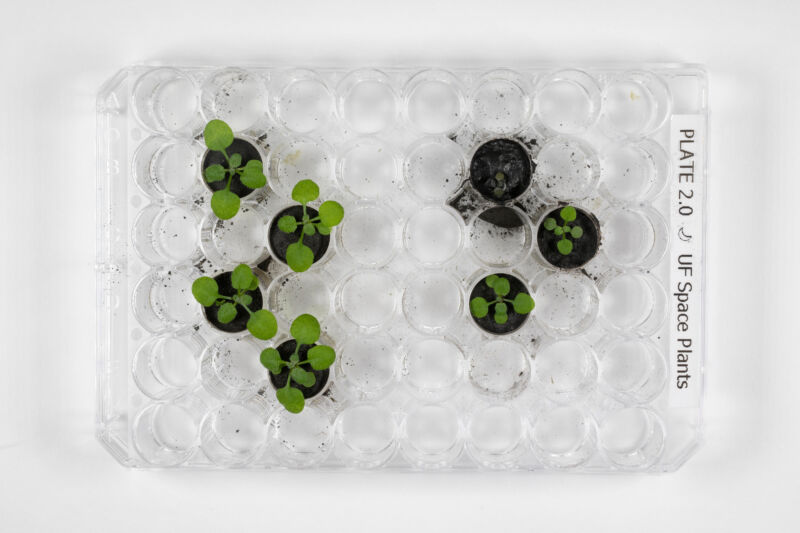Plants will grow in lunar regolith, but they don’t like it

Enlarge / The plants grown in lunar soil (right) aren't nearly as happy as those grown in a soil meant to simulate it (left). (credit: Tyler Jones, UF/IFAS)
As anyone who has read or watched The Expanse or The Martian knows, growing plants in space has some big advantages. Plants can contribute to the maintenance of a healthy atmosphere, as they recycle water and provide some variety to diets. While they can be grown hydroponically, the process requires a significant amount of water, which might be in short supply. So for missions that will land on a body like the Moon or Mars, growing plants in the local soil might be a better solution.
But local soils on these bodies don't look like the ones we find on Earth, which have a complicated mix of minerals, organic compounds, and microbial life. Can plants adjust to these differences? A group of researchers at the University of Florida-Anna-Lisa Paul, Stephen Elardo, and Robert Ferl-decided to find out, and they used some incredibly rare material: lunar soil returned by the Apollo missions.
In the mixThe lunar soil exists in a form called regolith, which is basically loose, dusty material created by the constant bombardment of lunar rocks by micrometeorites. When the first samples were returned during the Apollo era, studies of the interactions of this regolith with living things focused on the fear of pathogens that could pose a danger to life on Earth. As a result, plants and seeds were briefly exposed to lunar soil and then tested to see if this exposure altered their growth. There were no attempts to grow anything in the soil.
Read 13 remaining paragraphs | Comments